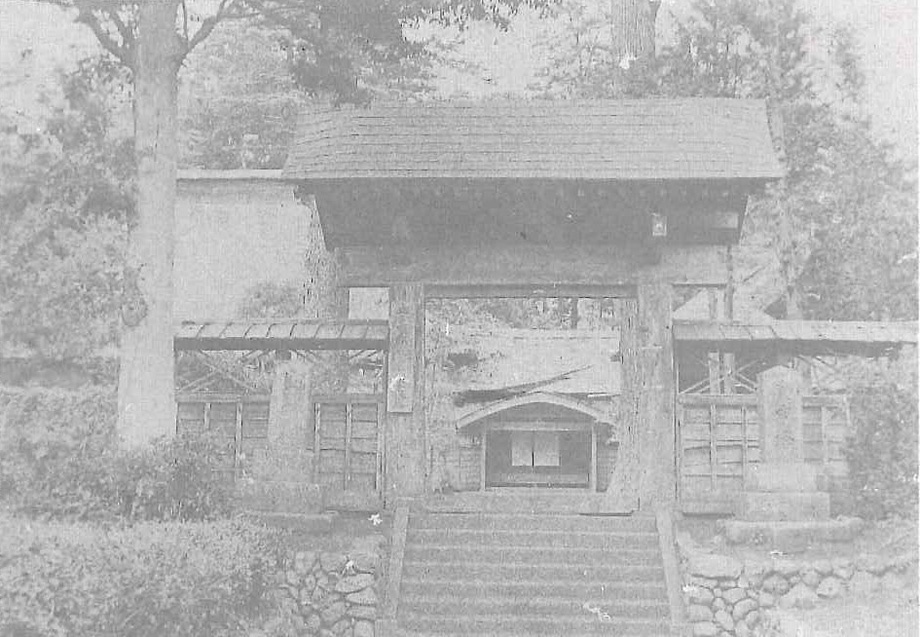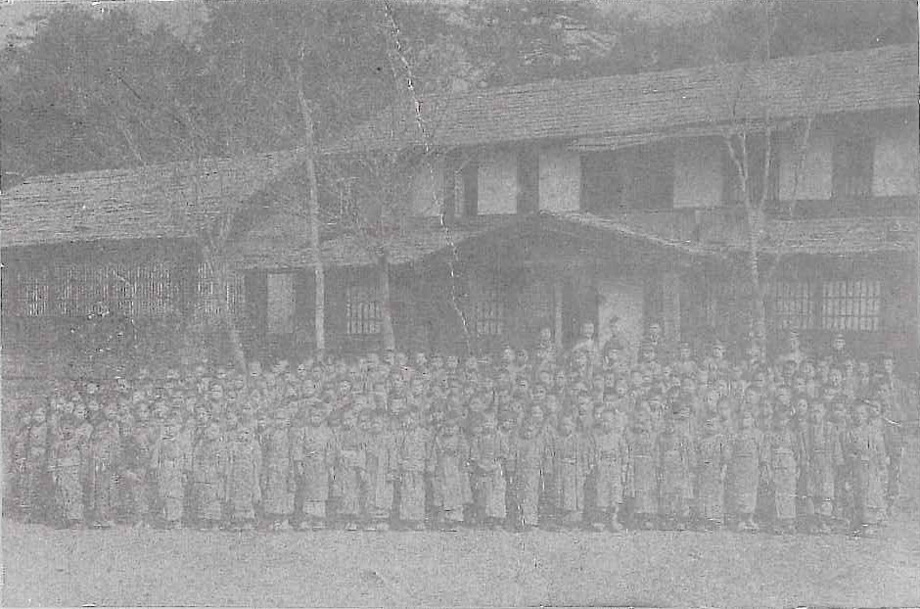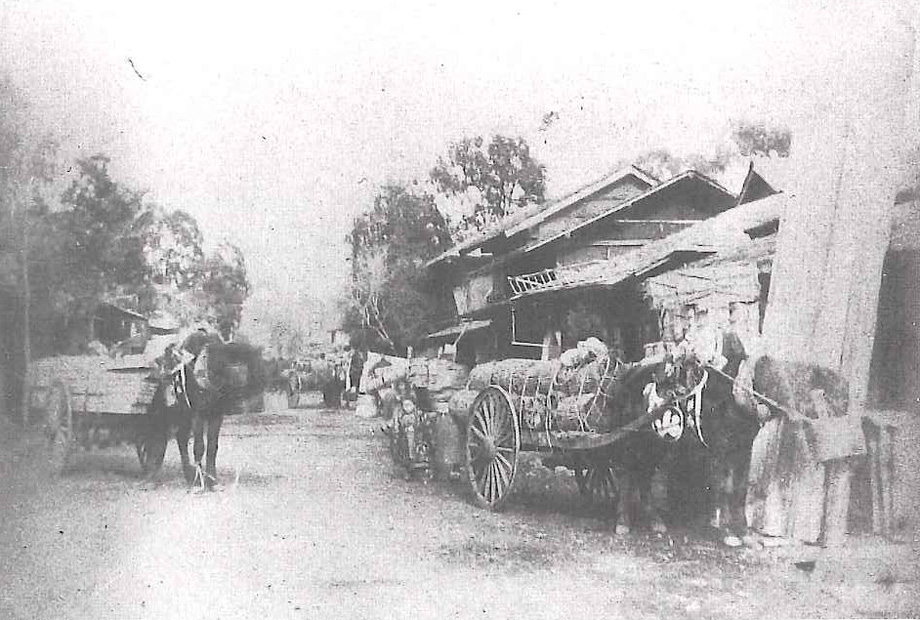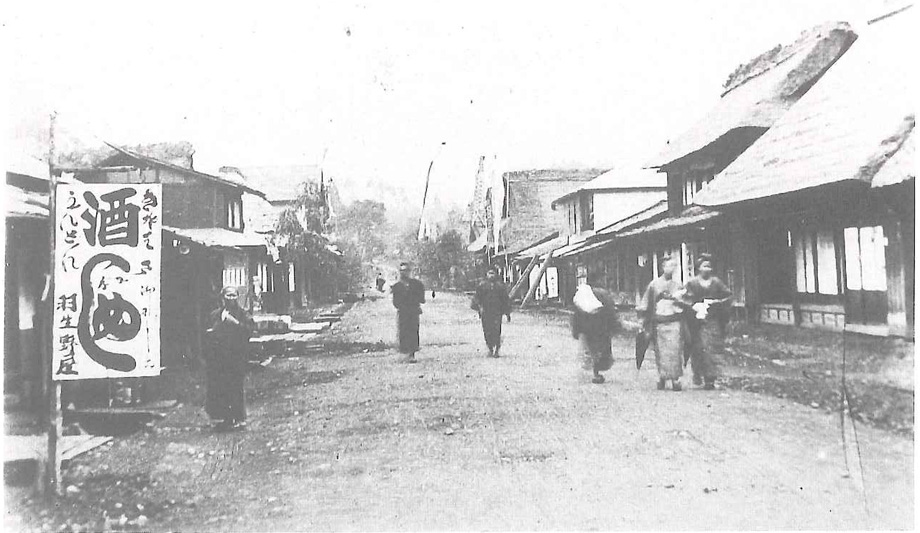| 明治政府になると行政のしくみもかわり、長岡、箱根ヶ崎、石畑、殿ヶ谷と岸は連合して戸長役場をつくりました。 | When the Meiji government began, administrative structures were also changed, and Nagaoka, Hakonegasaki, Ishihata, Tonogaya and Kishi were united and created a Kocho (village headsmen's) office. |
| 明治21年に町村制がしかれ、岸を除く村々で箱根ヶ崎外三ヶ村組合をつくり、円福寺に役場をおき村政を行いました。 | In 1888, when the Towns and Villages System was laid, a four-village association formed by Hakonegasaki and three villages, except Kishhi, administered the villages from the office located in Enpuku-ji Temple. |
| 明治26年に三多摩郡は神奈川県から分れて東京府に編入されました。 | In 1893, Three Tama-gun Regions were separated from Kanagawa Prefecture and incorporated into Tokyo Prefecture. |
| 一方、二本木、駒形富士山、高根の村々は合併して元狭山村をつくり埼玉県に属しました。 | On the other hand, the villages of Nihongi, Komagata-Fujiyama and Takane were merged into Moto-Sayama village and continued to belong to Saitama Prefecture. |
 |  |
| 組合役場のおかれた円福寺(明治末頃) Enpukuji temple where the association office was located (circa the end of Meiji) | 箱根ヶ崎狭山学校(明治31年頃) Sayama school in Hakonegasaki (Circa 1898) |
| 教育の面では、明治5年学制がしかれ、箱根ヶ崎に狭山学校、石畑、殿ヶ谷に成立学校がつくられましたがその後二校が合併して武蔵野尋常高等小学校が開校しました。 | In terms of education, the school system was established in 1872, and Sayama School was founded in Hakonegasaki and Seiritsu School in Ishihata and Tonogaya. Subsequently, the two schools merged and Musashino Senior Elementary School opened. |
| この他長岡学校、有隣学校(元狭山と宮寺)がつくられています。 | In addition, Nagaoka School and Yurin School (for Moto-Sayama and Miyadera) opened at that time. |
| 明治政府は国税を確保するため土地所有者を確認し、地券を発行しました。 | The Meiji government formalised land ownership to establish a national tax base, and issued land title certificates. |
| 狭山池周辺や日光街道、松並木あるいは山林のように共有地であったところも民間に払い下げられ税の対象とされたので町の姿も大きく変わりました。 | The town's appearance was changed dramatically by, for example, the transferring of the communal areas around Sayama Pond, Nikko Kaido Road (the second Nikko route) and also the rows of pine trees and even forests to private ownership, thus becoming taxable. |
| 宿駅として栄えていた箱根ヶ崎では、社会の変化に対応して鉄道や馬車の計画もありましたが、実現がむずかしく、次第に衰えました。 | Responding to social changes, Hakonegasaki, which had flourished as a post station town, had plans to launch a new railway system and horse-drawn carriages, but these were difficult to implement and the area nonetheless gradually declined. |
| 当時の産業は農業が主で麦、陸稲、さつまいも等を生産し、養蚕藍葉等お金にかえられるものにも力を入れました。 | The main industry at the time was agriculture, producing wheat, a dry-land rice variety, sweet potato, etc., and with emphasis also on such cash crop production as sericulture and indigo. |




